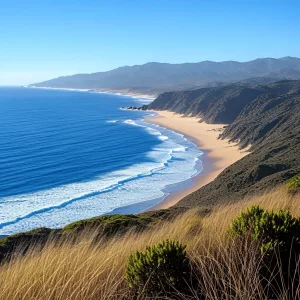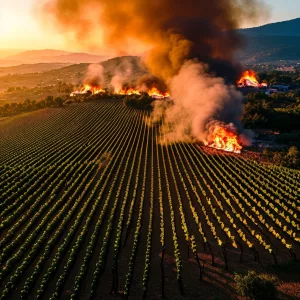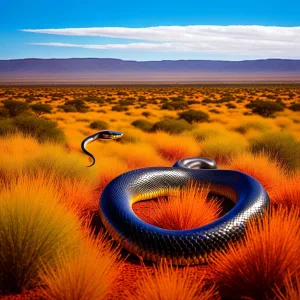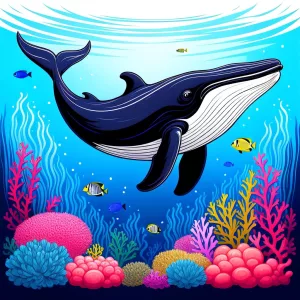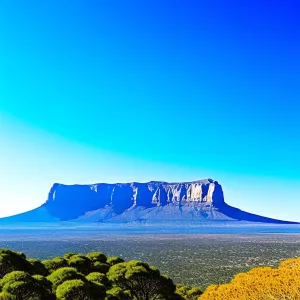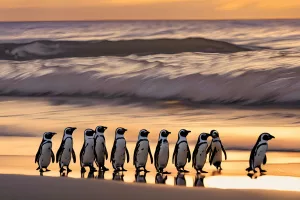South Africa’s National Gardens Week, happening from March 10 to March 16, 2025, is a vibrant celebration of the country’s stunning nature. Organized by the South African National Biodiversity Institute (SANBI), it offers free entry to beautiful botanical and zoological gardens, inviting everyone to explore and appreciate the rich variety of plants and animals. With the theme “Grow Your Joy,” this week encourages people to connect with nature through activities like yoga, guided walks, and educational programs. As visitors wander through lush landscapes, they not only find peace and joy but also learn about the importance of protecting these precious ecosystems for future generations. Join the celebration and discover the wonders of South Africa’s natural beauty!
In KwaZuluNatal, South Africa, floods bring a harsh mix of beauty and destruction. The rains can transform landscapes but also drown homes and families, leaving communities in grief and chaos. Ntombikhona Mhlongo’s story highlights the pain of losing loved ones and being trapped by rising waters. Yet, through the heartbreak, the spirit of togetherness shines as neighbors help one another, embodying the idea of Ubuntu—caring for one another. As they rebuild, there is hope for a better future, where art and community strength inspire resilience against nature’s unpredictable dance.
The wildfires on Table Mountain were fierce and destructive, sparked by a mix of natural causes and possible human actions like arson. This iconic South African landmark, known for its unique plants and beauty, suffered greatly, raising alarms about protecting our environment. Amid the flames, a political drama unfolded, with accusations flying between officials about who was to blame. As the smoke clears, the incident shows a bigger global problem: wildfires are becoming more common due to climate change. Now, there’s a chance for everyone to reflect on how we can better care for our planet and work together to prevent such disasters in the future.
South Africa’s West Coast is a breathtaking mix of golden sands and the cool Atlantic waves, perfect for nature lovers. Here, you can find amazing campsites like Silwerstroomstrand Resort, great for families, and Ganzekraal Coastal Resort, where adventure meets relaxation. Yzerfontein Caravan Park offers a cozy spot near untouched beaches, while Tietiesbaai invites you to reconnect with nature in a rustic setting. Don’t miss Groenrivier Coastal Campsites, especially when the wildflowers bloom, painting the landscape in vibrant colors. Each site promises a unique escape into the wild beauty of the coast!
The SA Agulhas II is a crucial ship for studying climate change, sailing from Antarctica to Africa to collect important information about the ocean and its ecosystems. This floating laboratory helps scientists understand how rising ocean temperatures affect weather patterns and coastal communities in South Africa. Its research highlights the urgent need to protect our planet, showing that the ocean’s health is key to our survival. As it prepares for its next journey, the SA Agulhas II remains a symbol of hope and knowledge in the fight against climate change.
Firefighters in the Cape Winelands are facing tough challenges as wildfires rage across the beautiful landscape. With steep hills, thick bushes, and unpredictable winds, controlling the flames is no easy task. Teams from different agencies work hard, using helicopters and ground crews to protect farms and nature. This battle is not just about putting out fires; it’s also about saving the rich history and culture tied to this stunning region, known for its famous vineyards. Despite the fierce flames, the bravery and teamwork of these firefighters shine brightly, showing the strength of the human spirit against nature’s fury.
Pretoria is a beautiful South African city where history, culture, and nature come together. You can enjoy many affordable activities, like exploring the stunning gardens of the Union Buildings, visiting the touching Freedom Park, or relaxing in the Pretoria National Botanical Garden. Don’t miss the lively Hazel Food Market, where you can taste local treats, or Church Square, with its grand old buildings. For a taste of wildlife, take a selfdrive safari at Rietvlei Nature Reserve, where you can see rhinos and zebras while enjoying the great outdoors—all without spending much!
Table Mountain is a beautiful place in Cape Town, home to 22 different snake species like the Cape cobra and African puff adder. Hikers should walk in groups, stick to the trails, and be aware of their surroundings to stay safe. If you see a snake, stay calm and give it space—it usually won’t want to engage. If bitten, get medical help quickly, as some snakes can be very dangerous. Understanding these snakes helps us appreciate nature while keeping ourselves safe.
South Africa’s Garden Route is a stunning coastal stretch filled with charming towns waiting to be explored. Each town, like Gouritsmond with its peaceful beaches, Witsand where whales play, and Stilbaai known for its beautiful bay, offers unique experiences and adventures. Travelers can enjoy outdoor activities, vibrant local culture, and rich history in places like Albertinia, Riversdale, and Heidelberg. This magical region invites everyone to discover its natural beauty and the warmth of its communities, making every visit a memorable journey.
Baanksy, the famous painting sheep from Franschhoek, has vanished, leaving a trail of mystery and sadness behind. Celebrated for his unique talent, he captured hearts around the globe before disappearing on February 1, 2025. A huge reward of R1.2 million is now being offered for any clues to find him, underscoring how much he means to the Farm Sanctuary SA. His story, alongside his artistic legacy, highlights the incredible bond between animals and humans, sparking a movement that encourages kindness and understanding toward all creatures. As the search goes on, the hope remains strong for Baanksy’s safe return to his beloved studio.
Hermanus, a beautiful coastal town in South Africa, is about to shine even brighter with the opening of the South African Whale Centre (SAWC). This exciting new place will focus on marine conservation and education, helping people understand and care for the ocean and its creatures. Visitors will get to experience whales like never before, with cool technology that makes learning fun. The centre aims to inspire everyone to protect our marine life while boosting tourism and the local economy. With this new chapter, Hermanus is ready to lead the way in caring for the ocean’s wonders!
Baanksy, the famous sheep artist from Farm Sanctuary SA, mysteriously disappeared on February 1, 2025, just before a big art show. Known for his colorful paintings, he inspired many and carried on the legacy of another artist sheep named Pigcasso. Despite a thorough search and a R1.2 million reward for his safe return, nobody knows where he went. His story reminds us of the special bond between animals and art, leaving everyone hopeful and eager to see him back at his canvas, painting a brighter world.
Cape Town is famous for its breathtaking sunsets that paint the sky in vibrant colors, making every evening feel like magic. There are many perfect spots to watch the sun go down, like Signal Hill, where you can see the whole city spark alive in golden light. Lion’s Head offers a fun hike with stunning views, while Clifton 4th Beach provides a peaceful beach setting to unwind. Whether you’re at a busy waterfront or a quiet beach, each sunset is a beautiful reminder of nature’s wonders, creating unforgettable moments for everyone lucky enough to witness them.
The Cape Peninsula Baboon Advisory Group (CPBAG) is a new team formed in 2025 to help baboons and humans live together peacefully in South Africa’s beautiful Cape Peninsula. They bring together community members, scientists, and animal welfare advocates to find smart and kind ways to manage the local baboon population. With so many people living near baboons, CPBAG focuses on listening to the community and using their ideas to solve problems. This exciting initiative not only aims to protect the baboons but also ensures a healthy environment for future generations to enjoy.
Global warming is hurting the health of pregnant women and newborns. Rising temperatures can cause problems like preterm births and low birth weights, as heat stress makes it hard for mothers to stay healthy. This tough situation is even worse for women in poor areas, where they often live in hot, cramped homes and lack proper healthcare. To protect mothers and babies, we need better living conditions, healthcare support, and policies that consider the unique challenges faced by pregnant women, especially in vulnerable communities. Together, we can create a healthier future for all.
African penguins, known for their cute waddles and funny calls, are in big trouble. Their numbers have dropped by 97%, and if we don’t act fast, they could disappear by 2035! To help save these charming birds, you can sign petitions, share their story on social media, teach others about their importance, or volunteer with groups like SANCCOB. Every little bit counts, and your support can make a huge difference in keeping the African penguin waddling along South Africa’s shores for years to come!




